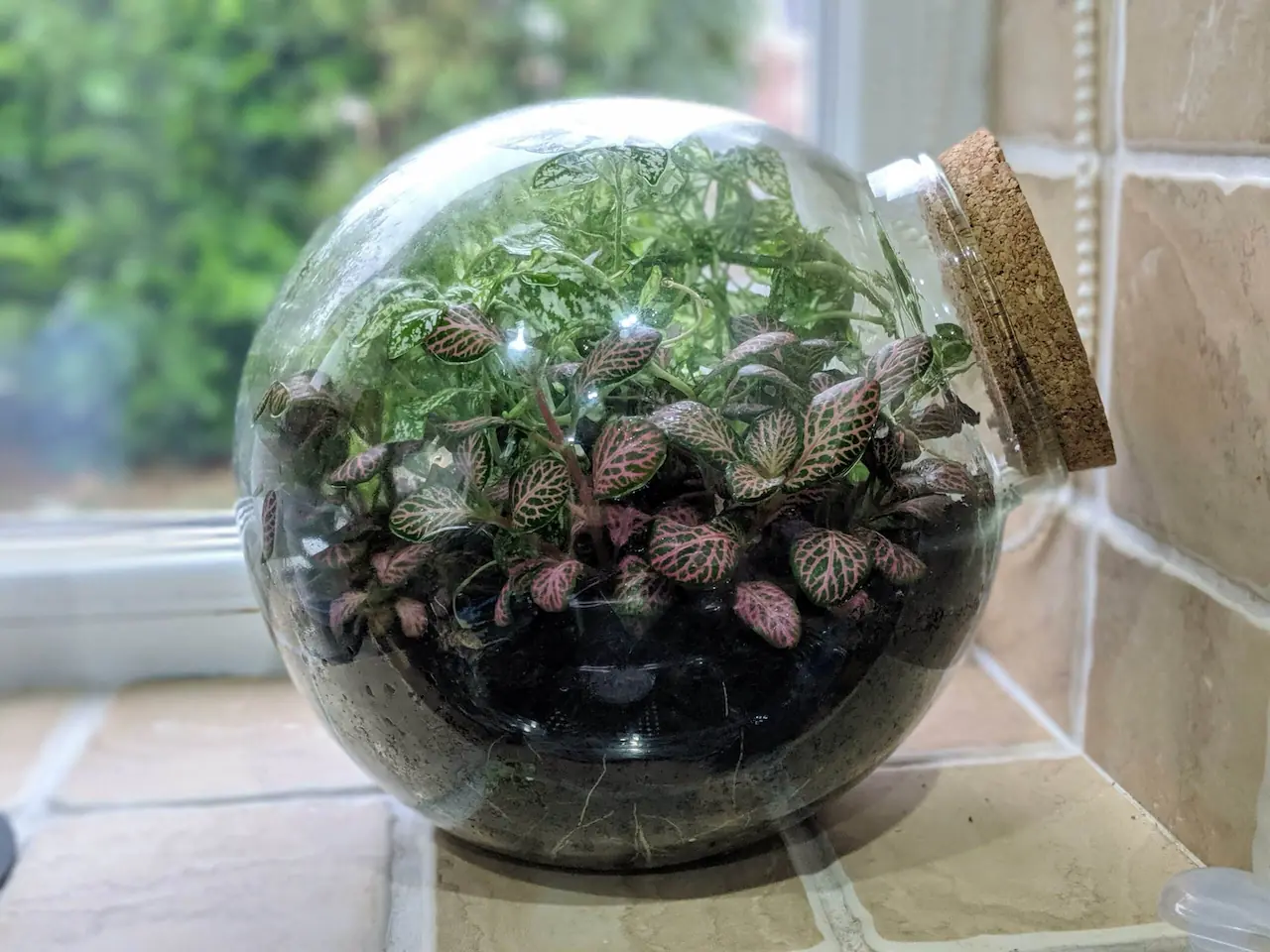💡 How to care for a polka dot plant in a terrarium made simple. Soil, placement, light, moisture, watering, and propagation, all covered!
The Polka Dot Plant is one of the most popular indoor plants because of the signature speckled white/pink patterned leaves.
Classified as a shrub, the Hypoestes Phyllostachya (fancy name for Polka Dot Plant) is the main attraction for many terrariums. It’s durable and resilient, easy to care for, paired with a distinct appearance no other resilient plant can match.
In fact, it is regarded as one of the best plants for terrariums because it thrives in wet and humid conditions.
So here’s how to build a Polka Dot Terrarium:
| Plant Type | Shrub |
|---|---|
| Lighting | Bright indirect light |
| Temperature | 60-80°F (15-26°C) |
| Watering | Regular |
| Humidity | High humidity (50-90%) |
| Growth | 10-20 inches |

With a mature size of 1-2 feet in length and width, the polka dot plant will need an adequately large terrarium.
This plant will grow to fill out the space it’s given. So generally you will be able to house it in smaller terrariums, though if you want it to get really bushy it will need more space to fill out.
Anything from a fish bowl, to a jar, and even a bottle can be used as a terrarium to house a polka dot plant.
When it comes to the substrate, polka dot plants thrive in organically rich soil with good drainage. All in all a balanced substrate that provides a mixture of these elements – you can easily create your own if you mixed potting soil with perlite and a layer of compost.
Nothing too complicated.
The polka dot plant can do well in a variety of lighting conditions, but it will thrive under very bring indirect light.
If you place it in a dimmer setting it will still grow and develop into a healthy plant but it will not be as vibrant and colorful as it would if exposed to bright light.
The polka dot plant is a very water-dependent plant. If grown inside of a closed terrarium, it needs a lot of humidity, a minimum of 50%, ideally 70-90%. If grown in an open terrarium, it needs constant watering. It will wither away very quickly if it gets dry.
Nothing a few sprays of water won’t fix.
Polka dot plants do excellent at room temperature. Ideally from around 20 to 25 degrees Celsius. As long as the temperature is not constantly under 15 or over 30 degrees, your Polka dot plant will thrive.
Polka dot plants grow very fast and high if given space. But in a closed terrarium a polka-dot plant will just get very bushy. Otherwise, it would have to be regularly trimmed to achieve a thick and busy look.
One of the best things about polka dot plants is the ease of propagation. A polka dot plant can be propagated once they reach maturity, and have long enough stems.
You can propagate a polka dot plant by taking a cutting from the main plant, preferably around 4 to 5 inches from the tip, and planting it.
Polka dot plants are known to be hardy and resilient, but they can face the same problems that most indoor, and especially closed terrarium plants face:
The Hypoestes Phyllostachys species has a lot of varieties in many colors and patterns. The polka dot plant for example is named after the foliage pattern of dots.
Others include “Confetti” and “Splash” plants. Another very similar species is the small plant Fittonia.
The polka dot plant is an excellent choice for both a closed and open terrarium. It’s a beautiful, vibrant plant, that will spice up the setting in your home.
Its only requirements are proper watering, high moisture, and a bit of trimming now and again making it the perfect terrarium plant!